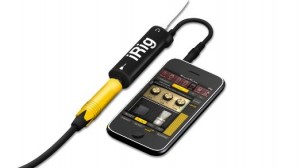After having used the iRig for two church services this weekend, I wanted to briefly revisit the subject with a few updates on the devices performance.
It was certainly convenient! I left the musical I was playing, and as I walked into the sanctuary, I plugged in the iRig and turned on the app (you’re supposed to plug it in before launching the app for it to perform correctly), which took about 15 seconds to load. My phone is an iPhone 4, so it’s pretty “old” and outdated. I plugged it into the direct box, plugged my guitar into the iRig, and I was ready to go.
Because I was not using an amp, I had to use headphones as in-ear monitors. Now, this might have worked better if I had nice in-ear monitors… but my headphones are really cute! They’re purple… Anyway, there was a lot of signal degradation between the guitar, phone, iRig, stereo cable, stereo to 1/4″ adapter, direct box, XLR, snake, sound board, ethernet cables, in-ear systems, and my headphones. So, it’s to be expected. I had to dig in and play rather aggressively to get a decent sound. Also, there was almost no sustain. To keep sound coming, I had to keep playing.
Once the app was running, I could put my phone to sleep, and turn it back on again without needing to re-open the app. When we finished playing for the first time, I turned on the tuner (because that mutes the sound), and put the phone to sleep.
My Brother and Sister-In-Law came to the Sunday service, and I had asked them to tell me how my guitar sounded out in the congregation. As I’m sure you all know, the sound you hear on stage is not the sound the audience hears. Rachel, my Sister-In-Law, who graduated Asbury University with in Vocal Theater Performance and a minor in music told me, “Well, I don’t know what sound you were going for, but it sounded like a guitar!” My brother, Thomas, was a little more helpful. He has been playing music as long as I have (he’s my go-to keyboard player), but took a different (and more sensible) path in college than I, and knows my tone, and the sound that I like to achieve with my equipment. He told me the sound was decent, but it was thin, and he could tell it was processed and digital.
This was what I expected to hear (no pun intended), but I was hoping for a little higher sound quality. However, I doubt anyone else noticed anything different. I specifically asked them to listen because I trust their judgement, but I’m not sure they would have noticed if I hadn’t said anything.
All in all, I think it’s a good product as a back up rig/practice tool.
